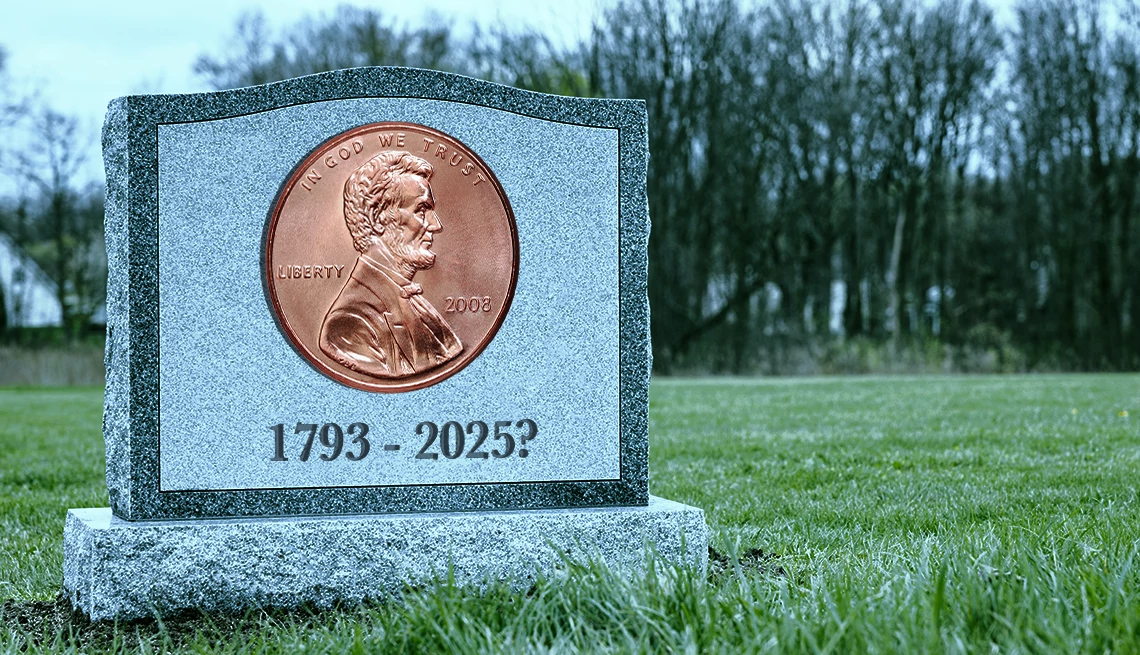
- Select a language for the TTS:
- UK English Female
- UK English Male
- US English Female
- US English Male
- Australian Female
- Australian Male
- Language selected: (auto detect) - EN
Play all audios:
CHANGING DESIGNS The penny’s design has changed a handful of times over the course of its history. The first U.S. pennies, with flowing hair, were engraved by hand, a laborious and
time-consuming process. Since then the coin has had a number of design iterations: * Liberty Cap (1793 – 1796) * Draped Bust (1796 – 1807) * Classic Head (1808 – 1814) * Coronet Head (1816 –
1839) * Braided Hair (1839 – 1857) * Flying Eagle (1856 – 1858) * Indian Head (1859 – 1909) * Lincoln Wheat (1909 – 1958) * Lincoln Memorial (1959 – 2008) * Lincoln Bicentennial * Union
Shield (2010 – Present) Notably, no pennies were minted in 1815 due to a copper shortage caused by the War of 1812 with Great Britain. Also, the U.S. Mint switched temporarily to a steel
cent in 1943 when an urgent need for copper to make munitions for World War II caused copper prices to spike. However, a few pennies that year were mistakenly struck in bronze, and those
coins are extremely rare — one sold for $1.7 million at auction in 2010. Fun fact: A 16-year-old in Pittsfield, Massachusetts, came across one when he was given change at his high school’s
cafeteria in 1947. COST TO PRODUCE NEW COINS According to the U.S. Mint’s latest annual report, each new penny costs 3.69 cents to make and distribute. In comparison, each new nickel costs
13.78 cents to make and distribute, more than double the coin’s value, and each new dime costs 5.7 cents. The U.S. issued more than 3.2 billion pennies during the 2024 fiscal year,
according to the U.S. Mint, at a reported loss of around $85.3 million. THE END OF THE PENNY? Despite repeated calls over the years to abolish the penny, the coin also has its fair share of
fans. Coin lobbying groups are fueling the debate. The Coin Coalition, an organization funded by vending machine manufacturers, video-arcade owners and soft drink companies, supports
eliminating the penny. The interest group Americans for Common Cents — which receives a portion of its funding from Jarden Zinc Products, a company that sells zinc coin blanks to the U.S.
Mint — lobbies in favor of keeping the U.S. penny in circulation. Proponents of the penny’s elimination cite the potential to save money on production. Those in favor of preserving the penny
say it plays an important role in keeping consumer prices down. Without pennies, cash prices for goods would need to be rounded to the nearest nickel. Getting rid of the penny has
modern-day precedent. Canada eliminated its 1-cent coin more than a decade ago, Australia withdrew its 1-cent coin from circulation in 1992, and New Zealand stopped issuing 1-cent coins in
1990.






:max_bytes(150000):strip_icc():focal(479x19:481x21)/The-Challenge-001-7d7633609e344324870d58089d819b2b.jpg)


